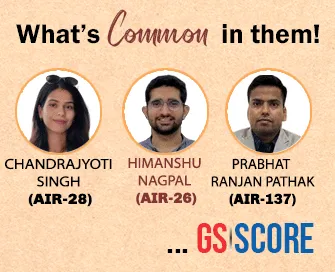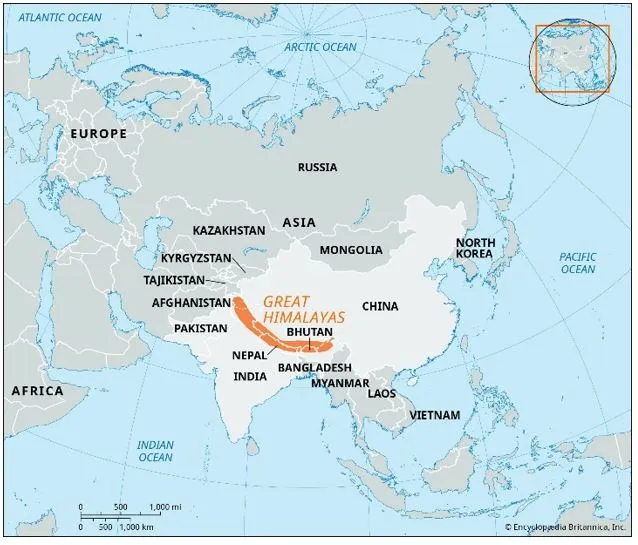

4th February 2025 (12 Topics)
Mains Issues
The gender budget of Delhi has grown significantly over the last decade, reflecting a stronger focus on women’s welfare in the region. However, while the overall budget for Delhi has increased substantially, questions remain about the allocation towards women’s education, a key factor in their economic and social empowerment.
What is the Importance of Women’s Education?
- Investing in women’s education has long-term benefits for both individuals and the economy.
- Educating women can help reduce the gender gap in employment and lead to wage parity.
- However, despite the growing gender budget, investment in women’s education has not kept pace with other expenditures, raising concerns about its prioritization.
- 2017-18 Peak: Women’s education accounted for 54% of the gender budget but has since fallen to just 27% in 2024-25.
- Recent Decline: In the last year, the education budget has decreased by 9%, marking a shift towards cash transfers and other welfare schemes, instead of structural investments like education.
Key Figures:
|
Women’s Education Budget: Initially Rs 2 billion in 2011-12, rising to ?18 billion in 2024-25, but it peaked at Rs 24 billion in 2017-18 before declining.
Impact on Women’s Employment and Skills:
- Low Female Labour Force Participation: Delhi’s female labour force participation stands at 21%, far below the national average of 45.2%. This is the lowest in India, highlighting limited job opportunities for women.
- Low-Paid, Low-Skill Jobs: Women are mainly employed in low-paying, low-skill jobs like house cleaning and domestic work. This indicates a direct link between inadequate education and limited career opportunities.
- Gender Gap in Top Roles: Women hold just 6% of top managerial roles (like legislators, senior managers, and CEOs), with 94% of such positions held by men. This reflects the underrepresentation of women in higher-skilled and leadership positions.
- Underrepresentation in High-Skill Jobs: Only 3.8% of women in Delhi work in technical or professional jobs, compared to 10.34% of men. This suggests that women are not benefiting equally from the skilled job market.
- Concentration in specific sector: The lack of investment in technical and professional education for women has led to their concentration in specific sectors such as teaching and healthcare. To reduce gender gaps, it is essential to focus on increasing opportunities in technical education, professional courses, and skill development programs.
Government’s intervention for Education
|


Mains Issues
Context
The Rajasthan Prohibition of Unlawful Conversion of Religion Bill, 2025, was introduced in the state Assembly, during the ongoing Budget Session. The bill aims to regulate and prohibit unlawful religious conversions in the state, with stringent penalties for violators.
Key Provisions of the Bill
- Cognizable and Non-Bailable Offence: The offence under this bill is cognisable (allowing police to make an arrest without a warrant) and non-bailable. This means the accused can be arrested and denied bail during the investigation.
- Punishment and Penalties:
- General Offences: If religious conversion is done by misrepresentation, force, coercion, undue influence, allurement, fraudulent means, or by marriage, the offender faces imprisonment of 1 to 5 years and a fine of Rs 15,000.
- Conversion of Minors, Women, or Scheduled Castes/Scheduled Tribes: The punishment for violations involving vulnerable groups is 2 to 10 years imprisonment with a fine of Rs 25,000.
- Mass Conversions: The bill mandates 3 to 10 years of imprisonment and a fine of Rs 50,000 for cases of mass conversions.
- Declaration Requirement: Individuals wishing to convert must submit a declaration to the District Magistrate at least 60 days prior to the conversion. This provision ensures a legal process for religious conversions.
- Compensation for Victims: The court may direct the accused to pay compensation to the victim, which can extend up to Rs 5 lakh.
- Repeat Offenders: Double punishment is proposed for repeat offenders, increasing the severity of penalties for those who commit the offence multiple times.
- Earlier to this, several states like Uttar Pradesh, Karnataka, Gujarat, Madhya Pradesh, Chhattisgarh, etc have passed anti-conversion laws to curb the forceful religious conversion.
Supreme Court Judgments on Conversion and Marriage
- Hadiya vs. Ashokan K.M. (2017): The Court ruled that an adult has the right to marry and convert to another religion of their choice. The state cannot interfere with an individual's freedom to marry or convert.
- Lata Singh vs. State of Uttar Pradesh (2006): The Court upheld an individual's right to marry anyone of their choice, regardless of religion or caste. Any state or external interference in this right is a violation of personal liberty.
- Sarla Mudgal vs. Union of India (1995): Conversion for marriage is permissible, but it cannot be used to avoid legal responsibilities, such as under the Hindu Marriage Act. The Court ruled such conversions are invalid in legal proceedings if done solely for evading laws.
- Pushpabai vs. C.T. Selvaraj (1982): The Court affirmed that conversion must be genuine and voluntary. Any coercion or misrepresentation in religious conversion violates the right to religious freedom.
Fact Box:Protection Of Freedom Of Religion Under Indian Constitution Article 25 to 28 of Part-3 (Fundamental Rights) of the Constitution confers the Right to freedom of religion.
Global Practices
|


Mains Issues
Context
India's economic growth appears to be losing momentum. After achieving 8.2% growth in 2023-24, the economy grew by only 5.4% in the second quarter of 2024, marking the slowest pace in six quarters. While a growth rate above 6% is seen as aspirational for most economies, for India, this rate is insufficient to meet the ambitious goal of becoming a developed nation by 2047.
What is Economic Slowdown?
- An economic slowdown is a period of slower economic growth, typically characterised by a decrease in the rate of growth of real gross domestic product (GDP).
- It means the production and earnings of these economies are not growing at the same pace as, say, last year.
- Causing factors: Declining consumer and business confidence, rising unemployment, and slowing global trade.
Key Contributing Factors to the Slowdown
- Weak Demand Side: The main factor behind the slowdown is the weakness in domestic demand, particularly in consumption expenditure and investment.
- Private Consumption: This remains sluggish, especially after the pandemic stimulus packages ended. It has stayed below 60% of GDP for most of the past two years, further dipping to 53% in Q3 of 2023-24.
- Fixed Capital Formation (Investment): Public investment, initially expected to spur private investment, has also slowed. Government capital expenditure dropped by over 12% in the first eight months of 2024 compared to the previous year.
- Declining Private Investment: Despite corporate tax cuts before the pandemic, private investment has been declining, particularly in 2024. There are signs that public investment is also slowing, undermining the expectation that it would "crowd in" private investment.
- Wage Squeeze and Inflation: The workforce, particularly in the informal sector, faces stagnant or declining real wages. A report showed that while nominal wages increased slightly in key sectors, inflation, especially food inflation, outpaced wage growth. This disparity between wage growth and inflation is curbing purchasing power, leading to sluggish demand.
- Corporate profits, however, have surged, exacerbating income inequality and dampening overall demand.
- Labour Market Issues: Data from the Periodic Labour Force Survey shows that only 20% of India’s workforce has regular, salaried jobs, with many lacking job security or social benefits. The majority of workers in the informal sector face uncertainty and low wages, which hinders overall consumption.


Mains Issues
Context
India is on track to achieve its target of 20% ethanol blending in petrol ahead of schedule, with the goal set to be met in the next two months, a year earlier than expected. This ambitious target would require the production of nearly 1,100 crore litres of ethanol annually.
Key Highlights:
- Ethanol Production Sources: The 1,100 crore litres of ethanol required to meet the 20% blending target will come from a variety of feedstocks:
- Sugar and high-grade molasses: Expected to contribute around 400 crore litres.
- Food Corporation of India (FCI) rice: About 110 crore litres of ethanol is projected to come from FCI rice this year.
- Maize: This will account for around 350-400 crore litres of ethanol, a notable shift, as ethanol production from maize has grown significantly since 2020.
- Ethanol Distillery Capacity: India’s ethanol distillery capacity has grown to 1,600 crore litres, driven by government incentives and a stable, lucrative market for ethanol production.
Maize’s Role:
- Maize, traditionally used for food, animal feed, and starch, has gained importance in ethanol production.
- With the increase in demand for ethanol, maize is now cultivated more extensively for fuel.
- The government’s policy to allow ethanol production from maize has spurred its growth, and it has become a key feedstock alongside sugarcane.
- Initially, India was not producing much ethanol from maize, but now it is expected to produce 350-400 crore litres of ethanol from 9 million tonnes of maize.
- This shift is supported by farmers turning to maize cultivation, particularly in states like Karnataka, Madhya Pradesh, Maharashtra, and others, as it offers better financial returns than traditional uses like poultry feed.
- Negative Impact:
- The shift towards ethanol production could impact food supply, as maize, which is usually used for livestock feed, is now increasingly diverted to ethanol production.
- If more land is used for maize cultivation, it could reduce the availability of land for other food crops.
What is Ethanol Blending?
Maize Cultivation
|
PYQQ. Given below are the names of four energy crops. Which one of them can be cultivated for ethanol? (2010)
Solution: Q. According to India’s National Policy on Biofuels, which of the following can be used as raw materials for the production of biofuels? (2020)
Select the correct answer using the code given below:
Solution: |


Mains Issues
Context
The Union Budget 2025, tabled on 1 February, continues to prioritize energy security and energy transition with significant investments and policy reforms aimed at transforming India’s energy landscape. However, challenges remain in fully achieving energy transition goals, especially in the face of global disruptions and domestic policy complexities.
Measures taken by Government for clean energy
- Budget Allocations for Renewable Energy: The Ministry of New and Renewable Energy’s budget allocation increased from Rs 1,535 crore in fiscal year 2015 to Rs 32,626 crore in 2025, highlighting India's growing commitment to clean energy.
- However, there has been underutilization of these funds in most years, except for 2015 and 2023, leading to lower revised estimates (REs).
- PM-KUSUM Scheme: Launched in 2019 with an outlay of Rs 34,422 crore, the PM-KUSUM scheme aimed to set up off-grid solar irrigation pumps and grid-connected solar plants on fallow farmlands. Despite its ambitious goals, the scheme's response has been underwhelming, with less than half a gigawatt of installed capacity achieved so far.
- Exemptions to Customs Duty: Recognizing the inflationary impact of steep basic customs duty (BCD), the government decided to exempt 12 critical minerals and 35 capital goods from these duties. This policy shift aims to facilitate the local production of lithium-ion battery technology, crucial for India’s renewable energy future.
- Major schemes to promote clean energy and sustainable living:
- Green Hydrogen Mission
- PM Programme for Restoration, Awareness, Nourishment and Amelioration of Mother Earth
- GOBARdhan (Galvanizing Organic Bio-Agro Resources Dhan) scheme
- Mangrove Initiative for Shoreline Habitats & Tangible Incomes (MISHTI)
- Amrit Dharohar
- Pradhan Mantri Sahaj Bijli Har Ghar Yojana (SAUBHAGYA)
- Green Energy Corridor (GEC)
- National Smart Grid Mission (NSGM) and Smart Meter National Programme
- International Solar Alliance (ISA)
- Surya Ghar Muft Bijli Yojana
Renewable Energy Capacity in India (2024)
India’s Targets
|
Challenges in Clean Energy Adoption
- Import Dependence and Tariffs: In a bid to reduce reliance on Chinese imports, the government imposed a 40% basic customs duty (BCD) on solar modules and 25% on solar cells. While this aimed to boost domestic manufacturing, it led to rising solar power prices and slowed installation across the country.
- Coal Dominance in Power Generation: Despite significant growth in renewable energy, coal still contributes to about 70% of India's power output (as of October 2024). Experts have stressed the need for grid-scale battery storage technology to address the intermittent nature of renewable energy production and reduce reliance on fossil fuels.
- Critical Minerals Framework: India faces the challenge of securing critical minerals needed for energy transition technologies. These minerals, essential for batteries and solar cells, are largely imported, particularly from China.
- Equitable implementation of initiatives, especially in areas like rooftop solar uptake, remains uneven across states.
- Infrastructure readiness for the integration of renewables and the need for large-scale battery storage are key hurdles.
PYQ
Q. “Access to affordable, reliable, sustainable and modern energy is the sine qua non to achieve Sustainable Development Goals (SDGs)”.Comment on the progress made in India in this regard. (2018)


Prelims Articles
Context
US President Donald Trump's administration has decided to freeze the funds of the United States Agency for International Development (USAid).
What is USAID?
- Established in: 1961
- The United States Agency for International Development (USAid) was set up to administer humanitarian aid programmes on behalf of the US government around the world.
- It has bases in more than 60 countries and works in dozens of others.
- Key-functions:
- helps strategically important countries and countries in conflict
- leads US efforts to alleviate poverty, disease, and humanitarian need
- assists US commercial interests by supporting developing countries’ economic growth and building countries’ capacity to participate in world trade
- Top aid recipients in 2023: Ukraine, Ethiopia, Jordan, Democratic Republic of Congo, Somalia, Yemen, Afghanistan, Nigeria, South Sudan and Syria.
- Impact on India: USAid has been working in India for over 70 years. During the current fiscal year, India was to receive USD 140 million through USAid while the country's overall budget of over USD 600 billion.
USAID’s Role in India
- Healthcare: USAid helped in reducing maternal and child mortality, saving over 2 million children since 1990. It supported India's efforts to combat tuberculosis (TB) and HIV/AIDS. During the COVID-19 pandemic, USAID provided millions in aid.
- Education: USAID has partnered with India to improve literacy across 16 states, reaching over 2 million students.
- Water, Sanitation, and Hygiene (WASH): USAid supported India’s Swachh Bharat Abhiyan, helping more than 300,000 people access household toilets and ensuring 25,000 communities became open defecation-free.
- Food Security and Agriculture: USAid has assisted over 130,000 farmers by introducing improved farming technologies, leading to higher yields and increased incomes.


Prelims Articles
Context
India has made a remarkable achievement by becoming the country with the largest tiger population in the world, according to a recent study. Over the past decade, India has doubled its tiger population, reaching approximately 3,600 tigers, which now constitutes 75% of the global tiger population.
Key Statistics and Success Factors
- The tiger population in India now occupies an area of 138,200 square kilometers.
Government Initiatives:
|
- According to the 5th cycle of the All India Tiger Estimation 2022 (usually conducted in cycles of four years) summary report, India has a minimum of 3,167 tigers and is now home to more than 70 per cent of the world’s wild tiger population.
- This success is attributed to several key conservation measures, including:
- Protection from poaching
- Conservation of habitats
- Securing prey availability
- Efforts to reduce human-wildlife conflict
- Engagement and support for local communities
AboutTiger (Panthera Tigris)
|


Prelims Articles
Context
A recent study has uncovered concerning findings about the rapid retreat of glaciers in the eastern Himalayas, specifically in Arunachal Pradesh, over a span of 32 years.
Key Highlights
- Massive Glacier Loss: Between 1988 and 2020, 110 glaciers covering 85 sq. km were lost in the eastern Himalayas. This represents a loss of over 47% of the glacier cover in the region, with a retreat rate of 16.94 sq. km per year.
- Glacial Lake Outburst Floods (GLOFs): As glaciers shrink, they expose bedrock and create glacial lakes. These lakes are prone to glacial lake outburst floods (GLOFs), which pose a significant risk to communities and infrastructure downstream. In 2023, the region experienced a major disaster due to a GLOF in Sikkim, which claimed lives and caused damage to a hydropower project.
- Temperature and Precipitation Trends: Over the last century, the temperature in the Himalayas has risen by 6°C, with the eastern Himalayas warming at a rate higher than the global average (0.1°C to 0.8°C per decade). This warming trend is expected to continue, leading to higher temperatures and increased precipitation in the region by the end of the century.
- Impact on Freshwater Resources: The glaciers region play an essential role in maintaining the hydrological balance. The rapid retreat of these glaciers could threaten water availability for millions, especially during dry periods.
- Himalayan Glaciers' Role in Global Sea-Level: The glaciers in the Himalayas are important not only for local water supply but also in regulating global sea levels. As they melt, the freshwater flows into the oceans, contributing to rising sea levels.
Fact Box:The Himalayas:
|


Prelims Articles
Context
The Defence Research & Development Organisation (DRDO) recently completed three successful flight-tests of the Very Short-Range Air Defence System (VSHORADS) off the coast of Chandipur, Odisha.
About Very Short-Range Air Defence System (VSHORADS):
- The VSHORADS is an advanced Man Portable Air Defence System (MANPADS).
- The missile has been developed indigenously by the Research Center Imarat (RCI) in collaboration with other DRDO laboratories.
- The missile system is specifically designed to protect against low-altitude aerial threats, primarily targeting drones, helicopters, small aircraft, and other aerial objects that fly at low altitudes, which are typically challenging to target with conventional air defense systems.
- Man Portable System: VSHORADS is a lightweight, portable missile system that can be carried and operated by a single soldier, providing flexibility and ease of deployment in various combat situations.
- The system is designed to be used by all three branches of the Indian Armed Forces—the Army, Navy, and Air Force.
Man Portable Air Defence System (MANPADS)
|


Editorials
Context
The Ministry of Labour and Employment has set a deadline of March 31, 2025, for States and Union Territories to harmonize and pre-publish draft rules for the new Labour Codes. This review comes at a time when the Economic Survey of 2024 recognizes mental health as a crucial driver for individual and national development, emphasizing the mental health needs of workers, particularly blue-collar workers, who face significant challenges due to their work environments.
Mental Health and Blue-Collar Workers
- Mental Health Acknowledgment: The Economic Survey of 2024 highlighted that 10.6% of adults in India suffer from mental disorders, with a severe treatment gap of 70-92%. The mental health of blue-collar workers, in particular, is impacted by unsafe working conditions and poor work-life balance.
- Risks in Work Environment: WHO outlines several risks affecting workers’ mental health, including long work hours, excessive workloads, unsafe conditions, job insecurity, and poor pay. These disproportionately affect blue-collar workers in comparison to white-collar employees.
- Elitism in Mental Health: Despite growing awareness, mental health services are more accessible to white-collar workers, leaving blue-collar workers without adequate support, further widening the disparity in workplace mental health protections.
Legislative and Policy Gaps
- Occupational Safety Code Limitations: The Occupational Safety, Health and Working Conditions Code (2020) largely ignores mental health, with physical safety being the primary focus. The phrasing ‘as far as reasonably practicable’ leaves room for limited enforcement of mental health provisions.
- Social Security Code Exclusion: The Social Security Code’s definition of ‘employment injury’ excludes mental health conditions arising from work stress or strain. The lack of clear legislative recognition of mental health as an occupational hazard prevents workers from claiming compensation for mental strain.
- Private Sector Efforts vs. Government Gaps: While some private companies have initiated programs to improve mental health among white-collar workers, such as Infosys’ HALE program and Wipro’s Mitra initiative, government initiatives like Tele Manas lack sufficient outreach and awareness among blue-collar workers, diluting their effectiveness.
The Way Forward
- Legislative Framework for Mental Health: There is a need for a rights-based legislative framework that balances employer requirements with the duty to provide a safe environment that includes mental health protections for blue-collar workers.
- Inclusion in Occupational Disease List: The government must amend the list of occupational diseases under the Social Security Code to include mental health conditions caused by work-related stress, which will reduce reliance on judicial interpretations.
- Promoting Awareness and Support: Creating awareness about government initiatives like Tele Manas among blue-collar workers and imposing statutory obligations on employers to support mental health will be crucial in addressing the mental health needs of this workforce.
Practice Question:
Q. Critically evaluate the challenges faced by blue-collar workers in terms of mental health and safety. How can the upcoming Labour Codes and existing legislative frameworks be modified to ensure a balanced approach towards both physical and mental well-being in the workplace?


Editorials
Context
India's maritime sector, particularly its shipping and shipbuilding industries, faces multiple challenges despite government investments. The Sagarmala project has made significant strides in port modernisation, yet the Indian shipping industry has remained stagnant due to various structural and financial issues. The Union Budget 2025 proposed new initiatives, but key challenges persist, especially concerning tax policies and capital constraints.
Sagarmala Programme and Investment Overview
- Sagarmala Project: The government’s flagship Sagarmala programme has outlined 839 projects requiring Rs 5.8 lakh crore by 2035, with significant investments in port modernisation, connectivity, and port-led industrialisation.
- Expenditure Breakdown: Over 50% of Sagarmala’s investment is allocated to port modernisation, 35% to port connectivity, and 10% to port-led industrialisation.
- Economic Growth and EXIM Trade: India's economy grew by 43% from 2016 to 2023, with an increase in EXIM trade, but stagnation persists in the domestic shipping industry.
Stagnation of Indian Shipping Industry
- Low Growth in Cargo Handling: Despite high investments, cargo handling at major ports grew only marginally by 14.26% from 2016-2021, and vessel traffic declined by 5.93%.
- Indian Fleet Aging: The average age of India’s shipping fleet increased to 26 years by 2022-23, affecting competitiveness. However, newer vessels were added in 2024 to reduce this age.
- Competition from Foreign Vessels: Indian vessels continue to lose market share to foreign-flagged ships, largely due to financing challenges, higher operational costs, and tax advantages for foreign ships.
Challenges and Budgetary Proposals
- Capital Constraints and Tax Disparities: Indian shipping faces high borrowing costs, rigid loan policies, and unfavourable tax laws, making it less competitive compared to ships registered in tax havens.
- Shipbuilding Sector Struggles: Inadequate infrastructure and high input costs, particularly on steel, further hinder the growth of India’s shipbuilding sector.
- Union Budget 2025 Proposals: The government proposed a Rs 25,000 crore Maritime Development Fund (MDF) and tax relief for shipbuilding, but industry stakeholders believe the fund may still fall short due to the high capital intensity of the sector.
Practice Question:
Q. Discuss the challenges faced by India’s maritime and shipping industries despite the Sagarmala programme and other government initiatives. How can policy reforms address the stagnation in Indian shipping and shipbuilding sectors?


Editorials
Context
The 2024 Union Budget has introduced Employment Linked Incentives (ELI) as part of an effort to create four crore jobs in the next five years. However, the focus needs to be on the types of jobs India must generate to ensure long-term economic growth and wage stability, particularly with the looming challenges posed by climate change, artificial intelligence (AI), and evolving youth aspirations.
Climate-Resilient Jobs
- Impact of Climate Change: India faces immense challenges due to climate change, having incurred a loss of $159 billion in 2021. By 2030, the country will require almost USD 1 trillion for climate adaptation.
- Job Creation in Rural and Urban Areas: The government must create jobs that foster climate resilience, such as e-rickshaws in rural areas or biogas plants to enhance energy security and reduce carbon footprints.
- Green Jobs Potential: Expanding non-fossil fuel energy sources, particularly solar power, can create millions of jobs, especially in decentralized energy systems like rooftop solar installations that are labor-intensive.
AI-Resilience in Employment
- AI-Driven Job Loss: The rise of generative AI and automation poses a threat to job security in sectors like IT and business services. McKinsey estimates that 50% of automation in India can happen in the next decade.
- AI-Resilience Jobs: To offset the impact, new job creation should prioritize physical engagement and creativity, such as expanding education and healthcare sectors to address talent shortages.
- Empowering Rural Communities: Financing initiatives like the National Rural Livelihood Mission can help rural artisans, farmers, and craftsmen tap into global and urban markets, fostering job creation outside traditional sectors.
Aspiration-Centric Jobs for Rural Youth
- Challenges of Rural Youth: Despite an increased interest in startups, rural youth often face insecurities stemming from poor foundational education, low resources, and a lack of job opportunities.
- Job Creation through Infrastructure: Building integrated pack-houses and boosting rural manufacturing could provide millions of jobs in rural areas, bridging the infrastructure gap and improving economic conditions.
- Aspirational Job Creation: Encouraging private-public partnerships to drive initiatives like the National Mission on Edible Oils can help reduce import dependence and empower rural youth by creating aspirational off-farm jobs.
Practice Question:
Q. Critically examine the three types of jobs India needs to create to ensure long-term economic growth and social stability. How can these job creation strategies help in addressing the challenges of climate change, AI automation, and rural youth aspirations?




